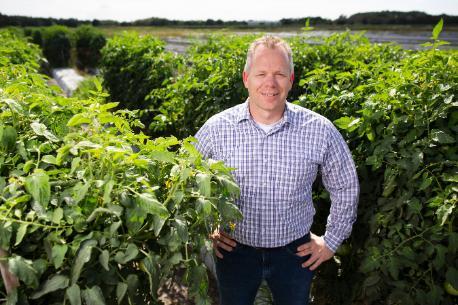By Clint Thompson
Fumigation is an integral part of a specialty crop producers’ weed management strategy.
According to Nathan Boyd, University of Florida (UF) associate center director and professor of horticulture/weed science at the Gulf Coast Research and Education Center, growers can achieve higher levels of success when they have a comprehensive understand of how fumigants function.

Associate Professor of Horticultural Sciences at the GCREC
“Fumigants do play a key role, especially in nutsedge management, but in other weeds as well,” Boyd said. “Where fumigants are used, they provide a level of weed control to do something that herbicides can’t do and that’s kill seeds.
“One of the things that people often overlook, fumigation provides a source of pest control before the crop is present. That’s a significant benefit if you’re trying to reduce pesticide residue on the crop.”
Different fumigants accomplish different objectives. They could be even more effective, though, if used in combination with each other.
“I’ve talked a lot about nutsedge control. Chloropicrin at low rates can actually stimulate the sprouting of nutsedge tubers, while 1-3D, which isn’t effective on tubers that haven’t sprouted, is very effective on sprouted tubers. If you combine the two of them, you get pretty decent control,” Boyd said.
“Some (fumigants) are better at soil borne pathogens. Some are better at nematodes. Some are better at weeds. Even though fumigants by their very nature are broad spectrum, they do control a range of pests. They tend to be better at one type of pest over another. When you combine them, then you broaden the spectrum of control.”
Other weed management options include herbicide applications, though few are registered for some crops; fallow period management; cultivation; and plastic mulches.









